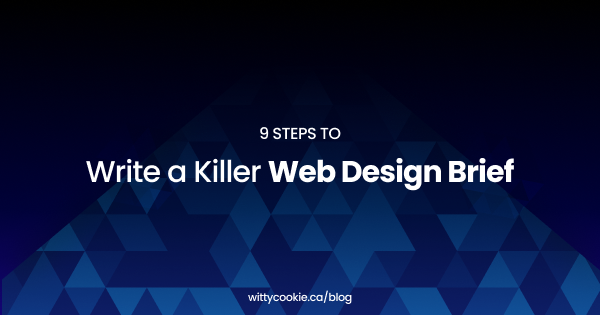9 Steps to Write a Killer Web Design Brief
The pandemic has meant many businesses have had to consider moving their brand online. With the increase in the number of websites increasing every day, your aim might be to stand out. One of the ways of doing this would be to have an awesome website and to do this, you would need to work with professionals. Web designers, when equipped with a web design brief, can help bring your design ideas to life. In this article, we’ll be going over 9 steps you might want to follow if you decide to write a web design brief.

Source: https://unsplash.com/photos/cckf4TsHAuw
Here are 9 of the best and proven steps to writing a killer web design brief:
1. Introduce your business
Your business identity and your website should go together. If your business deals in the sale of children’s toys, you might not want your website to look too serious and professional. This is why it’s important to communicate exactly what your business is all about. A typical web design brief should contain information about your brand, including:
- The name
- The location
- When it was founded
- The kind of products or services you sell
- What your mission is as a company
- Your target audience
- Current trends in the market
This sort of information can prove useful in guiding the most professional web design teams in their creation process. For instance, the web design team you hired might decide to focus on the legacy, or perhaps the mission of the company.
2. Explain your goals
For a project to be successful most times, everyone needs to be on board when it comes to the true purpose behind a project. When you understand the purpose of a change, you’re more likely to make meaningful contributions. The same principle applies to web design. When writing your web design brief, you might want to share some driving factors behind the design or redesign of your brand’s website.
For instance, you might be looking to drive more traffic to your webpage. In some cases, you might want to focus the attention of potential customers on some features of your website. All these are important information that you might want to seriously consider including in your brief.
3. Describe your target audience
If the web design team isn’t aware of the audience they’re designing for, they might end up going through multiple revisions before coming to the right design. Your target audience refers to the people your brand is looking to as customers. Back to our earlier example of a children’s toy website, your target audience will have to be parents, as children won’t be browsing the website or making any purchases.
You will want to make your website look fun and attractive, but not too much that it doesn’t look professional. This whole process might then prove costly and time-consuming for you.
4. List your competitors
Your competitors shouldn’t only be seen as competitors, but also as sources of inspiration. By listing out some of your tough competitors, there’s a good chance the design team might be able to learn a thing or two about their design approach. This shouldn’t be a copy of their website, but more of the learning of key aspects of their design that appeal to your shared target audience.
For instance, back to the children’s toy example, if you notice your competitors all have images and videos of children testing out their products, you might want to include that on the web page of your new website.
5. Share your design vision
You might want to use your design brief to communicate to the web design team the kind of design you’re looking for. There are some websites that come with a stylish design, while some come with more professional looks. As stated earlier, this might be different depending on your target audience.
To avoid multiple revisions of the entire design process, you might want to share your design vision early on. Some website design teams even offer free consultations, so you can share your thoughts without having to pay a dime. The feedback you get from the web design team might lead to changes in your design vision as well.
6. Make sure to go into detail with your requirements
Based on current technology, it’s currently impossible to read the minds of others. The only way we’re able to understand what someone else is thinking is true clear communication. The same thinking should be applied when writing out your requirements in the web design brief.
You want to be as clear as possible, to avoid confusion down the road. If you sell children’s toys, you might want to describe the age bracket of children your toys are meant for. This might give better insights to the web design team.
7. State your budget
While you might have many things you intend to implement in the design of your website, not everything might be possible. One of the major reasons is money. You don’t need to give an exact figure, but a general estimate would be very helpful. This could allow you and the web design team to focus on what’s most important to the new website, and perhaps, depending on your budget, either remove or shift some design ideas to later dates.
8. State your deadline
Like your budget, a deadline is important in guiding web design teams to successfully complete a project. This will allow them to accurately decide how much time is needed for each milestone, and how much it might cost you. This is also important to avoid missed deadlines, as the team will be aware of the deadlines in advance. Just like the budget, you might not have to have a specific deadline in place, but an estimate would be needed.
If you’re looking to have your children’s toy website designed, you might be looking at a deadline before the resumption of school. While this might differ slightly between schools, a general September period would suffice. Like everything in your web design brief, you want to use the current date format and English, so if English isn’t your first language, you could use academicessaypapers.com to write your entire web design brief or other related writing assignments like college essays at affordable rates too.
9. Share your current design
If you have a website, you might want to share that in your brief. This would give the web design team the opportunity to ask questions regarding what you like, and what you would like removed. It could also give insights into further areas of improvement. When dealing with a professional team of web designers, there’s a good chance their experiences might prove useful to you.
For instance, certain color combinations might not be pleasant to look at, so while changing the color might not have been part of your redesign process, it could become part of it, especially if it proves beneficial.
In Conclusion
Trying to design a website can be a process that takes a lot of time and effort. To help cut down costs, you might not want to use a cheaper designer, but rather, you could try and focus on reducing the time it would take to complete the project. Clear and concise communication in its brief web design can be helpful in guiding everyone involved in a web design project. Hopefully, the tips provided in this article might serve you if you decide to write your short web design project.
Author’s Bio
Jessica Fender is a freelance writer and front-end web developer. She enjoys helping people, especially students, which is why she works with secretacademy.net to produce affordable high-quality essays. When she isn’t writing college essays or designing websites, Jessica enjoys watching movies with her closest friends.



